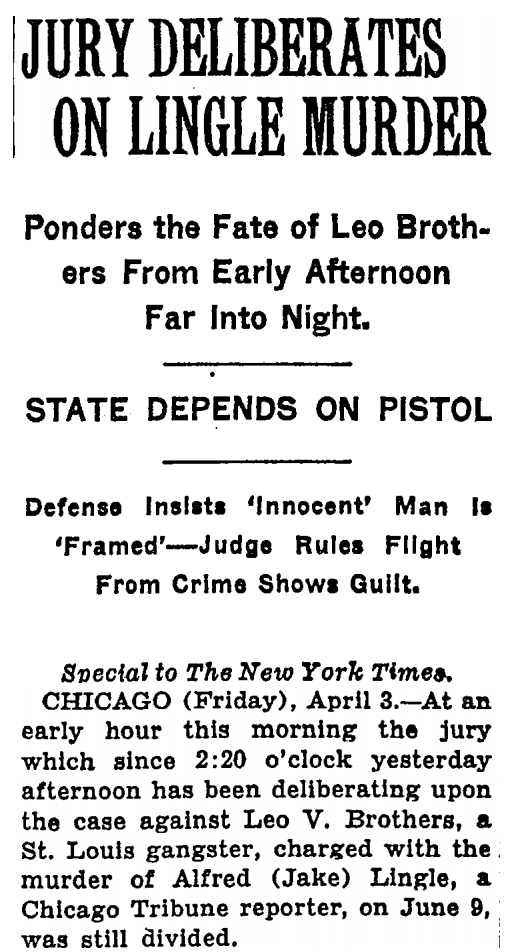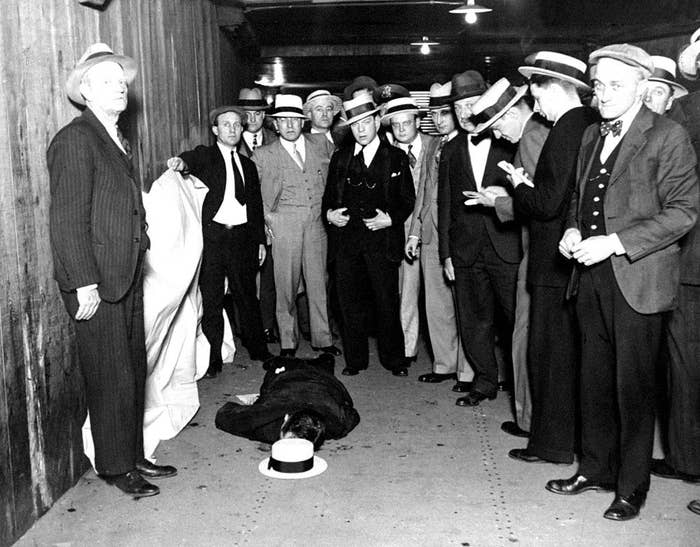If you're someone who enjoys true crime stories — aka a human with a pulse — then you've come to the right place. Today we're going to look at a crime from Capone-era Chicago that took place in June 1930. So lock the doors, pull up a chair, and let's talk about...

There were reportedly "numerous" witnesses to Lingle's murder...
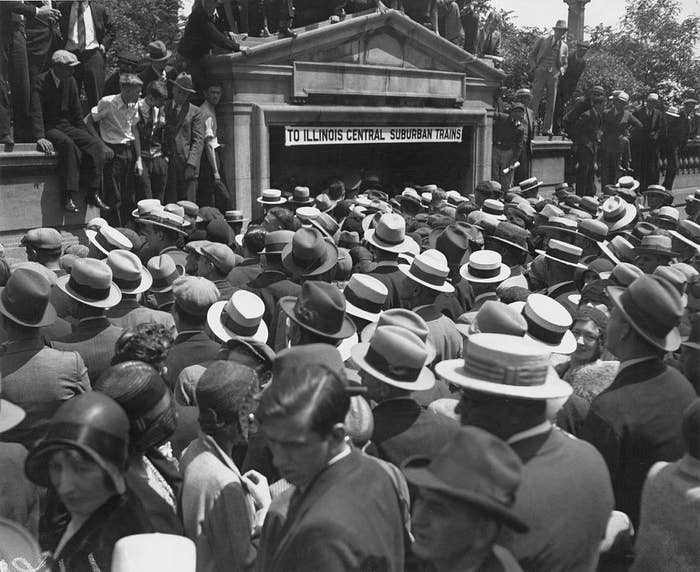
...and it was a dramatic scene that sounded like something straight out of a movie. (The Untouchables, anyone?)
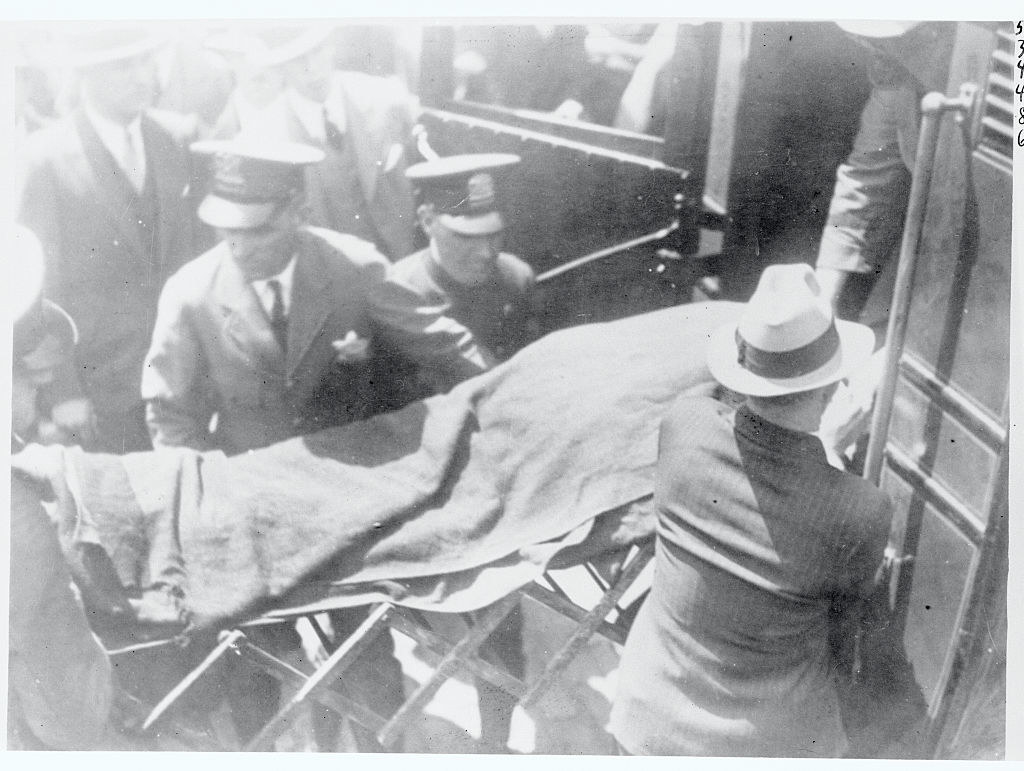
Now, it's important to note that Lingle was no stranger to the infamous 1930s Chicago mobster scene. In fact, he'd conducted several interviews with Al Capone in jail.
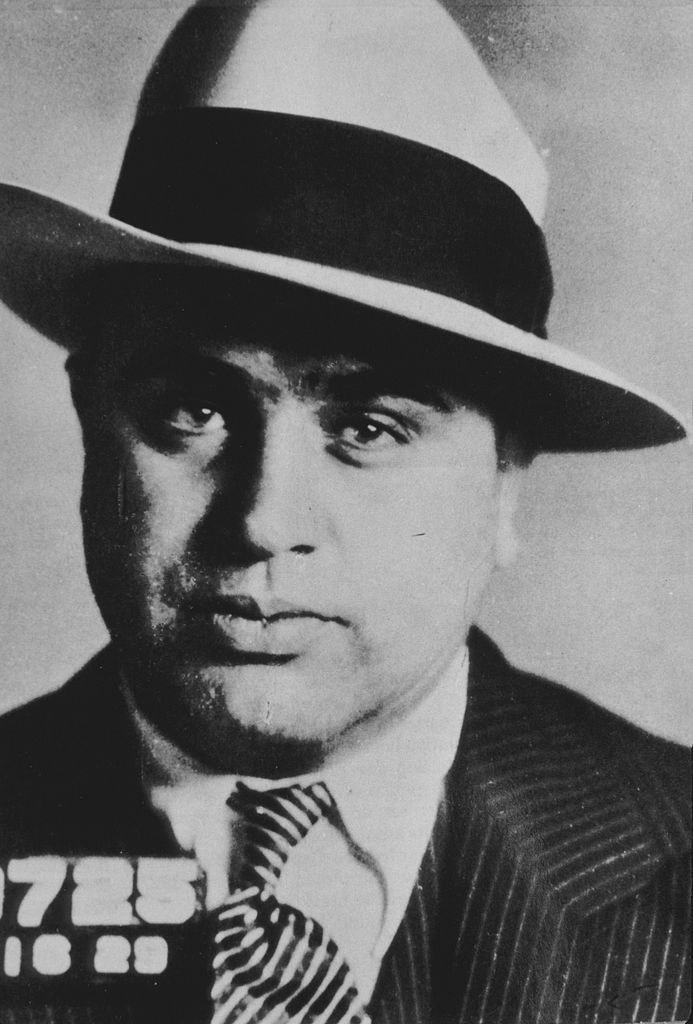
However, Lingle's ties to gangsters were not known to the public...until after his death. In fact, before his underworld connections came to light, his murder was called an "assassination" and was big national news at the time.

The Tribune, Chicago Press Club, and Chicago Evening Post all offered rewards — totaling $40,000 — to find the journalist's killers.
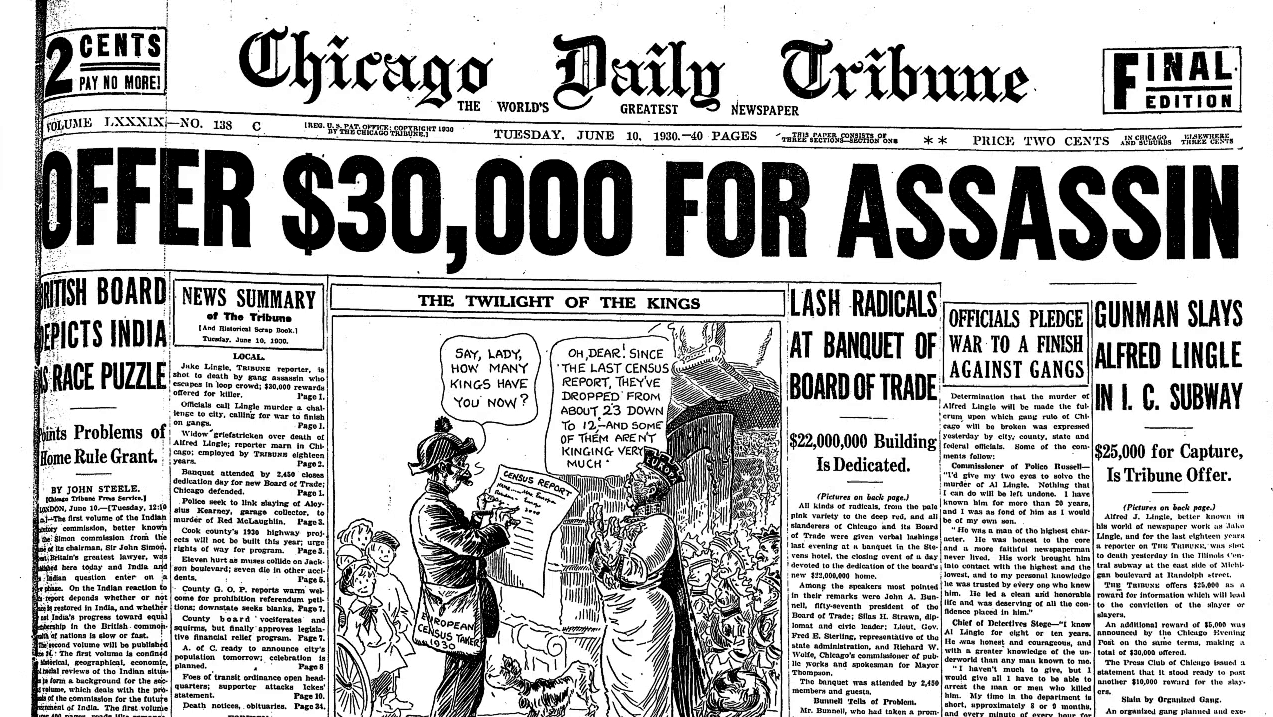
The WEIRD thing was, Lingle wasn't a particularly famous reporter or, realistically, anyone whose death would call for a "funeral usually reserved for royalty." So why the big fanfare?
Well, it turns out that Lingle was something of a crook himself and had deeper ties to crime than anyone (publicly) realized.
I forgot to tell you, but apparently Lingle was wearing a diamond-studded belt — a gift from Capone — when he was gunned down. So, yeah, RED FLAG.
According to the Tribune, Lingle made $65 a week as a reporter. But somehow, after a little over two years, he was able to put away $63,000 in the bank.
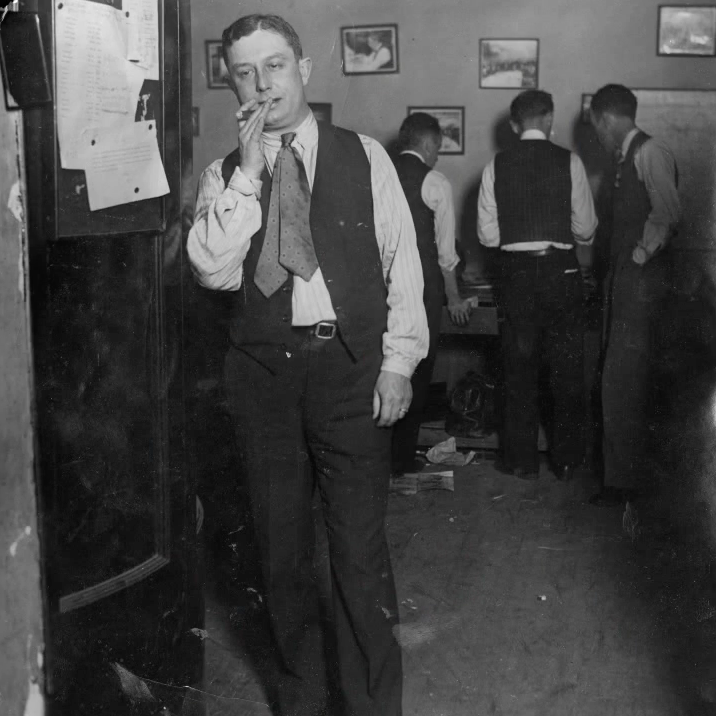
So WHY was Lingle murdered?
It's a little complicated, but the gist is that he was — ~SHOCKER~ — involved with racketeering. And it eventually came back to get him.
This was not an uncommon practice for reporters, police officers, and politicians throughout the city in that era.
An article in the Indianapolis Times from July 10, 1930, had actually reported that Lingle was "known among gangsters as the unofficial police chief of Chicago." And Chicago's actual police chief at the time, William F. Russell, was one of Lingle's best friends.
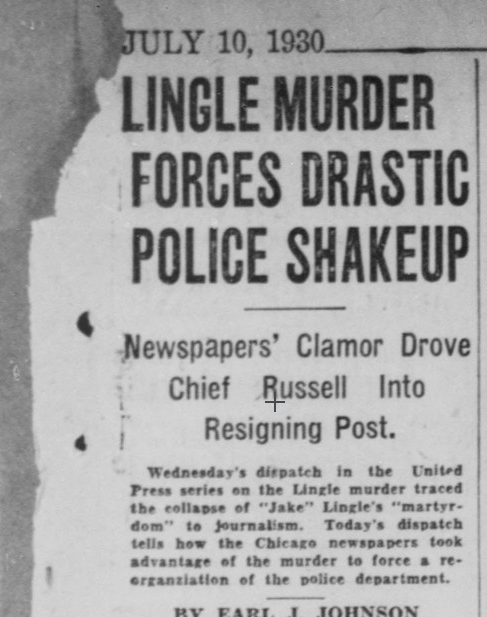
In the aftermath, Harry Brundidge, a reporter for the St. Louis Star, discovered that Lingle had been partners with Russell in a stock market account that apparently lost $150,000 over three years.
He also unearthed $85,000 in checks written to Lingle from various people or "benefactors."
According to the Daily News, "There was $5,000 each from an alderman, the mayor's spokesman, and the city's civil service czar, $30,000 from the publisher of a racetrack newspaper, and $2,000 from the top banana of Capone's gambling rackets."
And he discovered that Capone had "tossed in" a diamond-studded belt buckle for Lingle. YUP. The same buckle he was wearing when he was murdered.
Basically, Lingle and Russell were in on these crimes together. Mobsters would pay them to go about their business without punishment, and cops would pay them for promotions.
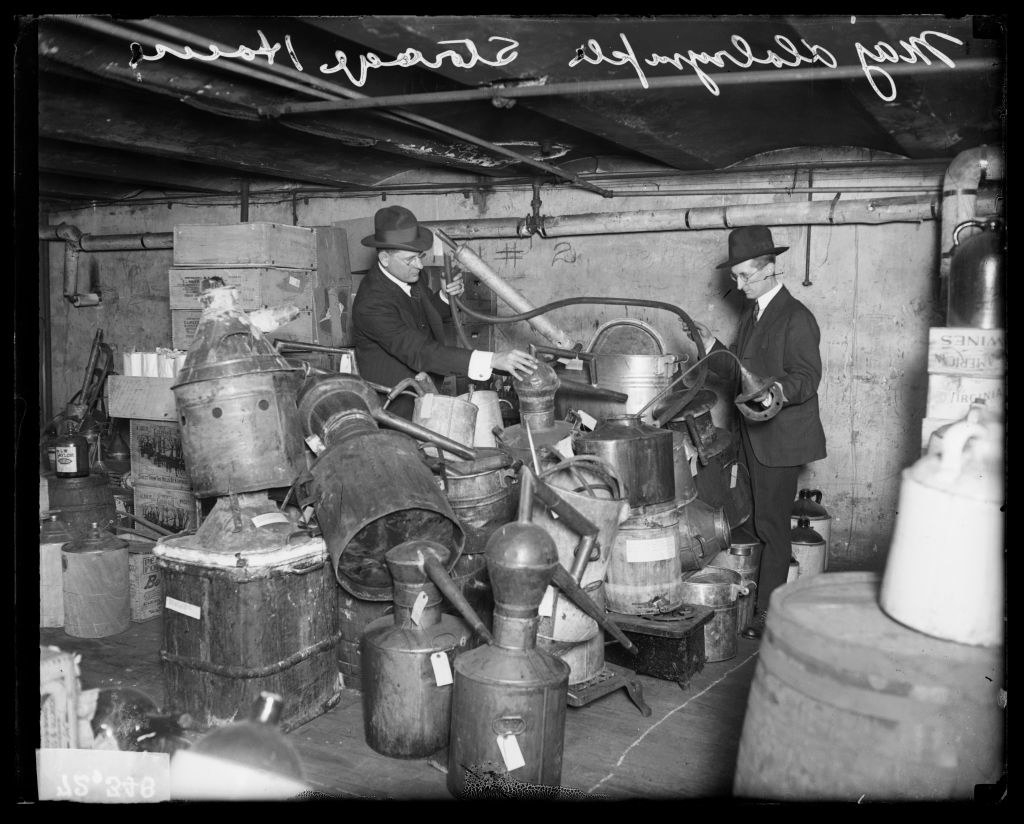
Within 24 hours of Lingle's fatal shooting, a man named Joe Traum was apprehended (among many others).
Traum and his brother were known criminals, having been tried for violating the National Prohibition Act, as well as being suspects in a past murder.
And not long after that, a man named Frank Bell was caught by police on June 30, 1930, after robbing a radio shop. He confessed to many alleged crimes and later, on Oct. 4, testified that he "drove the car which delivered Lingle’s murderers to the crime scene." One of those people was Traum.
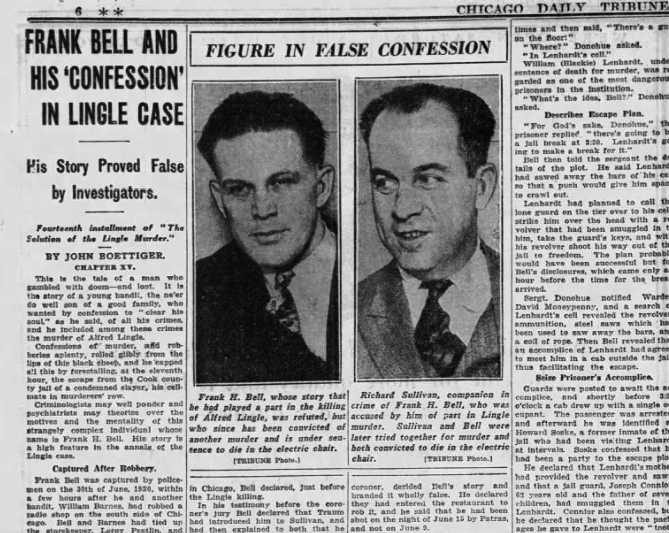
Here's Bell's paraphrased testimony from Time magazine's Oct. 30, 1930, issue:
I was hired by Joe Traum, Indiana and Kentucky gangster, and Richard Michael Sullivan, who was a friend of mine. I drove them in a stolen car to the Illinois Central pedestrian subway. There they were joined by a blond man whose name I never knew. These three killed Jake Lingle. I think the blond man fired the shot. They were acting for Christ Patras ... who represented Jack Zuta.
Jack Zuta (pictured below) was a Chicago "North Side" gangster and Capone rival. After Bell's testimony, he was pegged for arranging the murder of Lingle. Zuta was supposedly "outraged when Lingle demanded $15,000 for a blessing on his backroom casino."
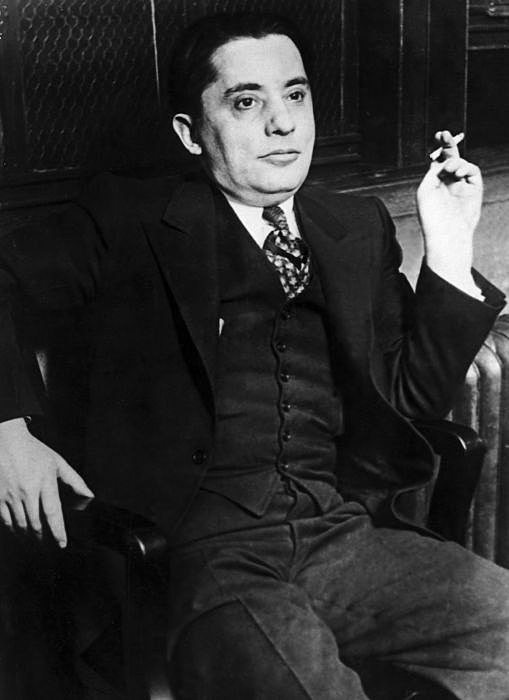
Zuta was interrogated but was eventually released. After the interrogation, a police officer gave Zuta a ride from the station "for safety," but the vehicle was gunned down. Zuta survived and fled to Wisconsin. A month later, he was shot to death. His murder was never solved.
But who was this mysterious "blond man," the man who witnesses said murdered Lingle and who Bell said fired the shot?
It's, again, a somewhat complicated answer. Basically, some weeks later, authorities got a tip that someone going by the name of "Buster" had shot Lingle. Investigators eventually traced a wiretapped call to a hotel and arrested this supposed "Buster," who turned out to be a man named Leo V. Brothers.
Brothers supposedly matched the description of the gunman — tall, with wavy blonde hair — and also had quite the crime record. He was eventually tried and convicted for Lingle's murder.
Still, it remains questionable if Brothers truly was the shooter. There have been theories that Capone himself set up Brothers to take the blame, just to "smooth public outrage and deflect police scrutiny."
In fact, Brothers' conviction "rested solely on eyewitnesses."
